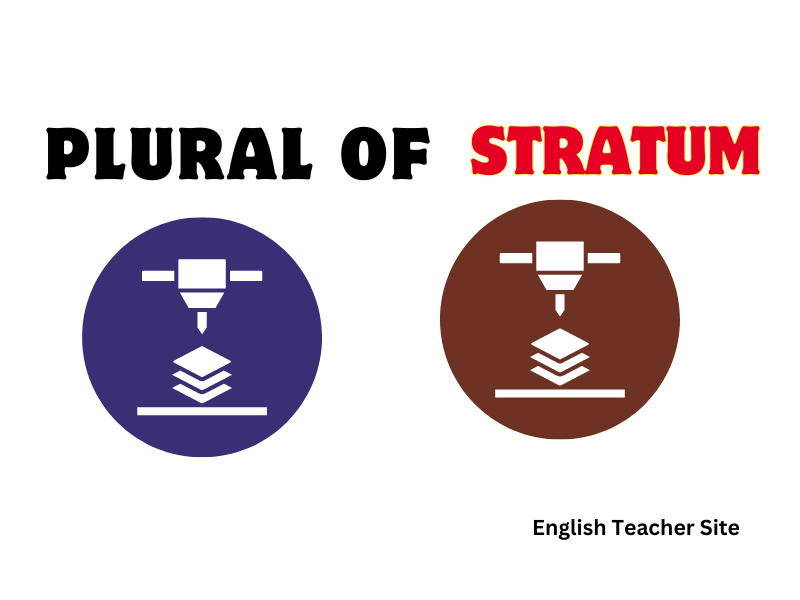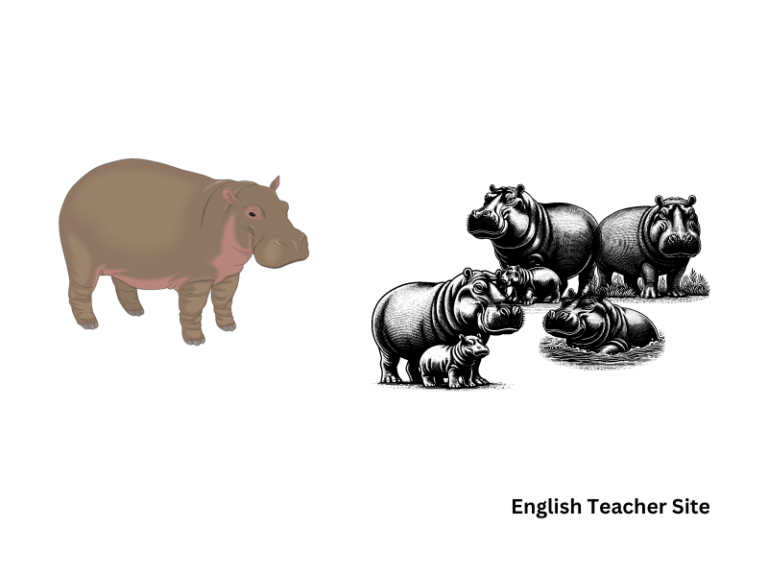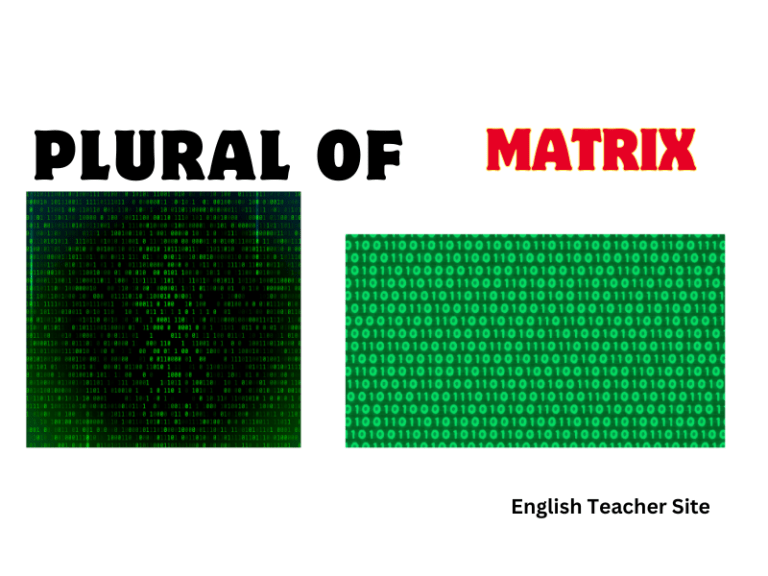Whats the Plural of Stratum: Understanding Geological Layers

- “Stratum” is a Latin-derived noun that means a layer or level within a particular context.
- The correct plural forms of “stratum” are “strata” and “stratums,” both acceptable in modern English usage.
- The word’s etymology dates back to the Latin “strātus,” meaning “to spread out,” reflecting its layered connotations in both geological and social frameworks.
The term “stratum” finds its origins in Latin, coming from the word “strātus,” which is a past participle of “sternere,” meaning “to spread out.” The word was adopted into English and retains much of its original meaning, referring to layers or levels within various contexts, whether it be in rock formations or societal structures. English has taken the Latin rules of pluralization, leading to two acceptable plural forms for “stratum.
What’s the Plural of Stratum?
The correct plural form of ‘stratum’ is ‘strata’.
Singular and Plural Forms:
| Singular | Plural |
|---|---|
| stratum | strata |
Stratum can be used in several contexts, referring to a range of layers, from social hierarchies to the layers of the Earth or even biological tissues. When speaking about multiple such layers or tiers, the term ‘strata’ is employed.
Contextual Usage of Stratum and Strata:
- Geological: A rock stratum refers to a single bed of sedimentary rock.
- Social: A social stratum represents a specific segment of society.
Strata are commonly found in discussions related to geology, where they refer to sets of layers seen within rock formations. They are also mentioned in biology, for example, stratified layers of tissue.
- Geological Strata: Different strata indicate various periods of sediment deposition.
- Strata in Biology: The skin is composed of several strata, each with its functions.
- The survey revealed several distinct strata of sedimentary rock.
- The analysis of societal strata can reveal much about socioeconomic disparities.
Singular Form of Strata
Stratum, the singular form, refers to:
- A single layer of rock or sediment
- One level in a hierarchical system
- A sheet-like mass within any context of layers
Examples of usage:
- A geologist discovers a stratum of sandstone.
- The societal stratum includes various socio-economic classes.
| Plural Form | Singular Form |
|---|---|
| strata | stratum |
When it comes to using these terms in sentences, remember:
- Stratum should be used for a single element.
- Strata is appropriate for multiple elements.
| Incorrect Use | Correct Use |
|---|---|
| A strata | A stratum |
| Many stratum | Many strata |
Meaning of Strata/Stratum
Stratum” is one such word, originating from Latin, holding significant meaning especially in the fields of geology, biology, and sociology.
Stratum refers to a single layer. This layer could be within various contexts such as:
- A layer of sedimentary rock or soil
- A level within society
- A layer of tissue in an organism
| Context | Example of Stratum in Use |
|---|---|
| Geology | A stratum of limestone within the earth’s crust |
| Sociology | A stratum representing a social class |
| Biology | The basal stratum of the epidermis |
Conversely, strata is the plural form of stratum. It denotes multiple layers or levels:
- Several layers of rock or soil strata
- Different levels within societal hierarchies
- Multiple tissue layers in a biological context
| Context | Example of Strata in Use |
|---|---|
| Geology | Strata visible in a cross-section of the Grand Canyon |
| Sociology | Analyzing the complex strata of urban social structures |
| Biology | Observing the various strata of plant cell walls |
- In geology, a stratum might be a distinct layer of sandstone.
- Strata encompass the different layers from the surface down to the bedrock.
Other Latin Nouns
Below are examples of first and second declension Latin nouns with their respective singular and plural forms:
First Declension (Feminine)
| Singular | Plural |
|---|---|
| ala (wing) | alae |
| formula (rule) | formulae |
Note: First declension nouns typically end with “-a” in the singular and form the plural by replacing it with “-ae.”
Second Declension (Masculine and Neuter)
| Singular | Plural |
|---|---|
| dominus (lord) | domini |
| bellum (war) | bella |
Note: Second declension masculine nouns often end in “-us” and change to “-i” for plural, while neuter nouns ending in “-um” use “-a” for their plural form.
Other declensions include:
- Third Declension: These nouns have various endings in the singular and typically form the plural with “-es” (e.g., corpus becomes corpora).
- Fourth Declension: Such as manus (hand), which remains manus in plural due to its u-declension.
- Fifth Declension: Exemplified by dies (day), with the plural dies remaining the same though occasionally dies is used.
When integrating Latin nouns into English, it’s also common to use English-form plurals, especially in less formal contexts. For instance, “data,” the plural of “datum,” is frequently treated as a singular noun in English.
- Recognize the declension to predict the plural form.
- Plurals can follow Latin rules or adapt to English conventions.
- Context often dictates the appropriateness of Latin or English plurals.
Sentences with the Word Stratum
| Singular Usage | Plural Usage with ‘Strata’ |
|---|---|
| The soil analysis indicated that the stratum consisted mainly of clay. | Geologists identified multiple strata, showcasing various types of sedimentary layers. |
| A specific stratum of society is often affected by certain economic policies. | The researchers observed that different social strata responded diversely to the new legislation. |
In the following list, the word “stratum” is used within a selection of sentences that effectively convey its meaning:
- The lowest stratum of the earth’s crust is composed of solid rock.
- Careful excavation revealed an ancient stratum containing artifacts.
- This cultural stratum is indicative of a community that valued artistic expression.
Now, turning our attention to sentences with the plural form:
- The team studied various strata to determine the site’s historical timeline.
- Different strata in a population are impacted by healthcare changes.
- The engineers took into account multiple strata when designing the foundation.
Application Examples of Strata/Stratums
Geology and Archaeology:
| Singular Usage (stratum) | Plural Usage (strata/stratums) |
|---|---|
| A single layer of sedimentary rock is known as a stratum. | Multiple layers, as seen in a cross-section of the Earth, are referred to as strata. |
| An archaeological stratum reveals information about a specific time period. | Different strata within an excavation site show various stages of historical development. |
Ecology:
- In ecology, a stratum might refer to a single layer within a rainforest, like the understory.
- Strata indicate multiple layers, such as those comprising the forest floor, understory, canopy, and emergent layer above the main canopy.
Social Sciences:
- Bold the term “social stratum” to highlight a particular social class.
- Refer to “social strata” when discussing various levels or classes within a society.
In literature, these terms are often used to construct metaphors or analogies, likening the layers of a subject to the stratification observed in natural or social sciences.
Usage Keywords:
- stratum: In a single geological formation, each stratum can be isolated and studied independently.
- strata: The geologist compared the fossil contents across several different strata.
Origin of the Word Stratum
The term stratum has its etymological roots in Latin, emerging as the neuter singular form of strātus, the perfect passive participle of sternō, meaning “to spread out” or “to lay down”.
| Latin Term | Definition |
|---|---|
| strātus | spread out, laid down |
In historical usage, the term has been employed to describe layers of rock or other materials, both naturally occurring and man-made. Its adoption into the English language reflects the influence of scientific and technical vocabulary where precision is essential.
Stratum initially entered English as a geological term around the 18th century. As a linguistic borrowing, it retains much of its original sense, pointing to a layer or a series of layers within a structure.
| Early Use | Implication |
|---|---|
| Geological layering | Strata of rocks and sediments |
| Social stratification | Layers within societal structures |
With its foundation in the concept of layering, stratum can also be found in various disciplines, from biology to sociology, each time indicating a distinct layer within a complex system.
- Biology: Refers to a layer of tissue or cells.
- Sociology: Denotes a level within a hierarchical social structure.
Sources
My name is Khamis Maiouf. I am the creator of the English Teacher Site, dedicated to providing valuable resources and insights for students around the world. With a passion for education and a commitment to helping students enhance their skills, I aim to make English teaching more effective and enjoyable for both educators and students.






